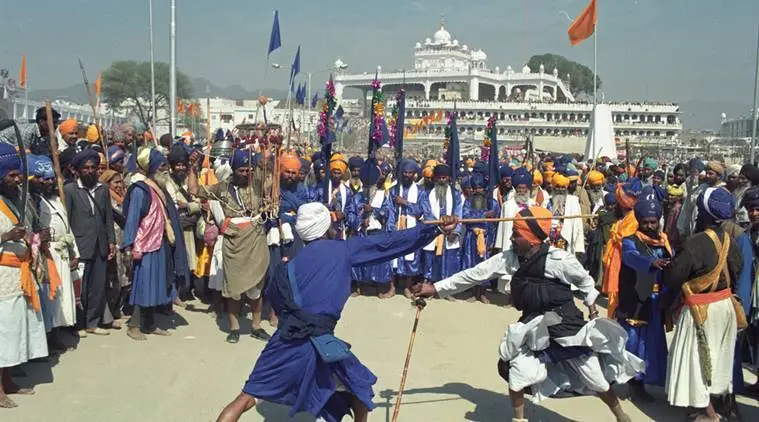The Festival of Light, or Diwali, is at the end of October or the beginning of November. It is a festival that is celebrated by Sikhs, Hindus, and Jains.
For Sikhs, Diwali is especially important because it marks the day in 1619 when Guru Hargobind, the sixth guru, and 52 other princes were let out of prison.
According to Sikh tradition, Emperor Jahangir put Guru Hargobind and 52 princes in jail. Guru Hargobind was asked to be set free, which the Emperor agreed to do. Guru Hargobind, on the other hand, asked that the princes also be set free. The Emperor agreed, but said that people could only leave the prison if they could hold onto the tail of his cloak. This was done so that only a small number of prisoners could get out.
Guru Hargobind, however, had a cloak made with 52 pieces of string, so each prince could hold onto one string and get out of prison.
Guru Hargobind came back, and the Sikhs lit up the Golden Temple to celebrate. This is still done today.


Use the multifaith calendar to find the date for this year.
Vaisakhi, which can also be written as Baisakhi, is one of the most important days on the Sikh calendar. It is the Sikh New Year festival and is held on April 13 or 14. It also remembers the year 1699, when Sikhism was born as a group religion
Vaisakhi is a long-established harvest festival in Punjab. It had been celebrated for a long time before Sikhs added to it.
Guru Gobind Singh, the tenth guru, chose Vaisakhi in 1699 as the time to turn the Sikhs into the Khalsa Panth, a family of soldier saints.
At Anandpur Sahib, Guru Gobind Singh started the Khalsa in front of many people.
Guru Gobind Singh came out of a tent with a sword during the Vaisakhi festival. He told every Sikh who was willing to die to come into the tent. The Guru came back by himself with a sword that was covered in blood. Then he asked for another volunteer. He did this four more times until five men went into the tent. The crowd was very worried until the Guru and five men in turbans came back.
These five men were called the "Beloved Five" or "Panj Piare."The Guru then baptised the men into the Khalsa. He sprayed them with Amrit, which is the Sikh word for holy water and means "immortalizing nectar." This is what the Sikh baptism ceremony is based on.
The way Vaisakhi is celebrated is similar to how Gurpurbs are. People decorate and go to Gurdwaras. All day long, there are parades, dances, and songs. On this day, a lot of Sikhs decide to join the Khalsa brotherhood.
The festival is marked by Nagar kirtan processions, which are important parts of Sikh culture and religious celebrations and take place in the streets (Nagar means "town").
Kirtan means singing hymns from the Guru Granth Sahib, which is the Sikh holy book. Music, singing, and chanting scriptures and hymns are always a part of celebrations.
The Panj Piaras are the people who lead the processions.
The Guru Granth Sahib will be held in a place of honor during the procession.